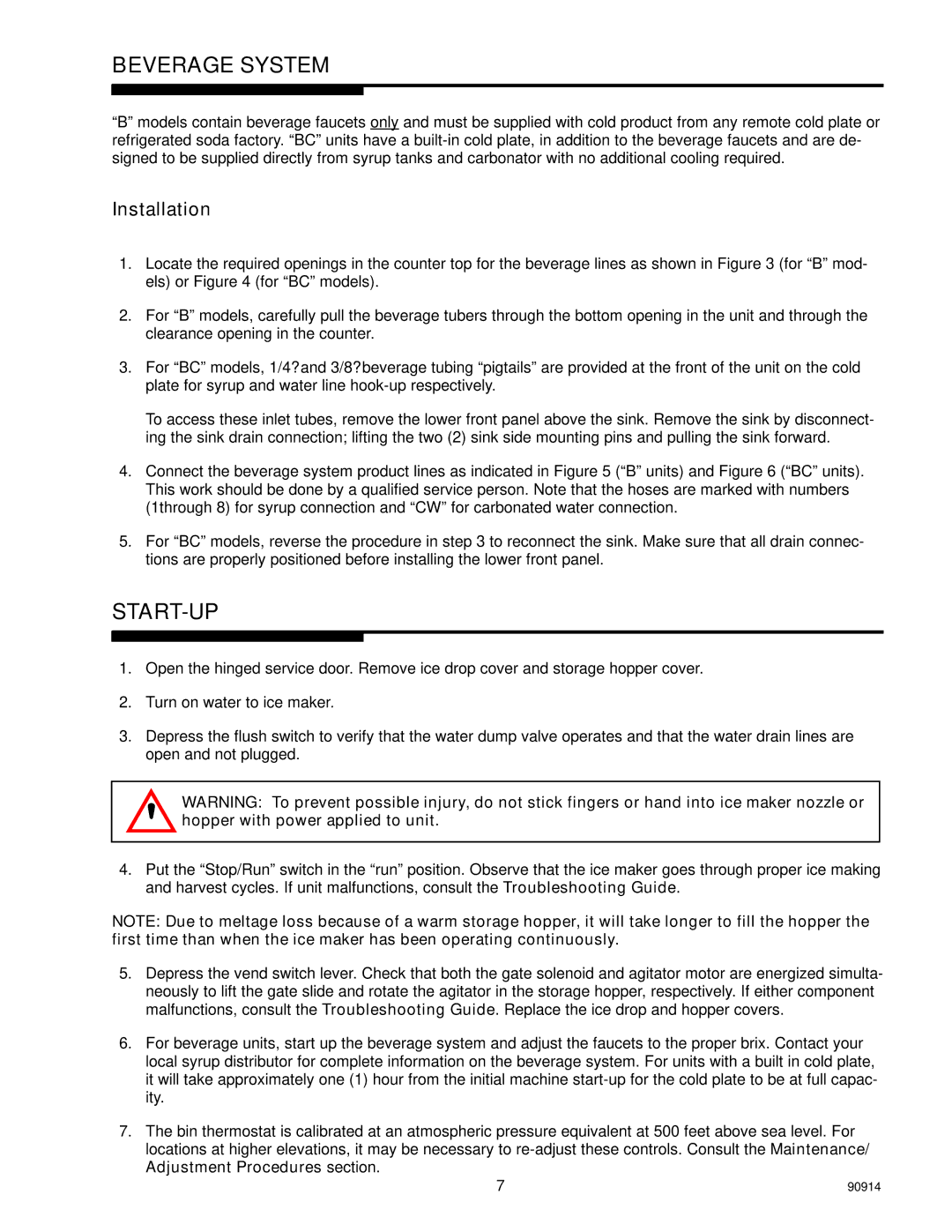SID851W/250S-BC, SID851W/250S-B, SID851W/250S, SID851A/250S-BC, SID851A/250S-B specifications
The Cornelius SID851 series, including models SID851A/250S, SID851A/250S-B, SID851A/250S-BC, SID851W/250S, and SID851W/250S-B, stands at the forefront of beverage dispensing technology. Designed for both efficiency and versatility, these units are ideal for various commercial applications, from restaurants and bars to event catering and convenience stores.One of the defining features of the SID851 series is its robust construction. These models are built to endure the rigors of high-demand environments, with durable materials that are both corrosion-resistant and easy to clean. This ensures long-term reliability and minimal downtime, crucial factors for businesses that serve high volumes of beverages.
The SID851 models are equipped with advanced cooling technologies, making them proficient in maintaining optimal beverage temperatures. The models utilize a state-of-the-art refrigeration system that ensures quick cooling and consistent temperature control. This feature is essential for preserving beverage quality, particularly for carbonated drinks that require specific serving conditions.
Each unit supports multiple beverage types, providing flexibility in service. The SID851A models, for instance, can easily transition between different drink options, allowing users to switch from sodas to mixed drinks without hassle. This versatility is enhanced by user-friendly interfaces that enable quick selection and adjustments.
Energy efficiency is another hallmark of the SID851 series. Designed with modern energy-saving technologies, these models not only reduce operational costs but also contribute to environmentally sustainable practices, making them ideal for businesses conscious of their ecological footprint.
The SID851W models offer an advanced wireless communication feature, allowing for seamless integration with point-of-sale systems. This smart technology facilitates real-time monitoring of beverage inventory and dispensing metrics, empowering business owners to make informed decisions based on data analytics.
Safety is paramount in the SID851 designs, featuring automated shut-off mechanisms to prevent overflows and spills. Additionally, the ergonomic design of the dispensing interfaces minimizes user strain, promoting a comfortable and safe working environment.
Overall, the Cornelius SID851 series represents a blend of innovation, durability, and efficiency, making them top choices for any beverage service operation. By investing in these models, businesses can enhance their service capabilities while ensuring that customer satisfaction remains a top priority.

